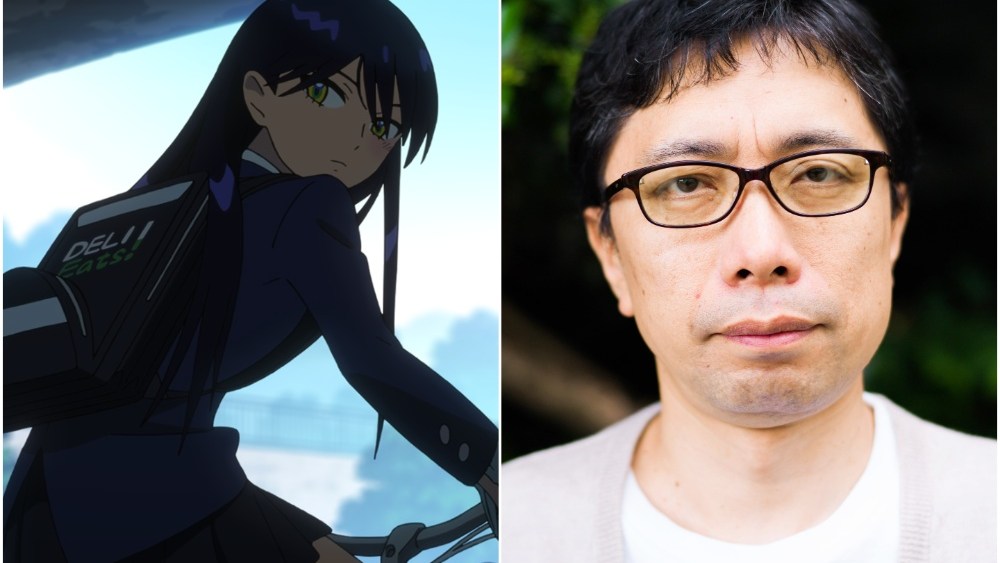What happens when the creative forces behind “Evangelion” and “Gundam” collide? Just ask director Kazuya Tsurumaki, who’s shaking up decades of anime tradition by putting a female pilot in the cockpit of anime’s most iconic mecha franchise for Prime Video‘s “Mobile Suit Gundam GQuuuuuuX.”
“I proposed some bold ideas thinking they would be rejected,” Tsurumaki tells Variety about the unprecedented collaboration between Studio Khara and Bandai Namco Filmworks’ Sunrise. “But they were approved, and I became the director.”
The series follows Amate Yuzuriha, a high school girl living in a peaceful space colony who meets a refugee named Nyaan and gets swept into an illegal mobile suit dueling competition called “Clan Battle.” Using the entry name “Machu,” Amate pilots a GQuuuuuuX in fierce daily battles. The story intensifies when an unidentified Mobile Suit “Gundam” and its pilot, a boy named Shuuji — pursued by both the space army and police — appears before her as the world stands on the precipice of a new era.
“GQuuuuuuX” unites the creative forces behind two of Japan’s most influential mecha franchises. Tsurumaki, previously assistant director on the original “Evangelion” series and director of cult classics like “FLCL,” now finds himself leading a dream team that includes “Evangelion” mastermind Hideaki Anno and veteran writer Yoji Enokido contributing scripts, with character designs by Take (“Pokémon Journeys”) and mechanical designs by Ikuto Yamashita.
“Having worked on mecha anime and robot anime, including the ‘Evangelion’ series, both myself and Khara’s staff have the expertise, particularly in combining character and mechanical action, which I thought could greatly contribute to Gundam,” Tsurumaki explains, reflecting on the marriage of anime’s two mecha powerhouses.
The director reveals that his professional relationship with Anno has evolved over their decades-long collaboration. “During my time working on the ‘Evangelion’ series, Anno was the director, and I was in a supporting role,” he says. “With ‘GQuuuuuuX’, our positions have reversed — now I’m in the position to judge whether to adopt Anno’s suggestions. If I think his ideas are right, I’ll implement them, and if I disagree, I can say so. I’m grateful that we’ve been able to build such a professional relationship where we can work together this way.”
The series marks a significant departure for the franchise by featuring a female protagonist. “This time, we thought we could explore the new theme of ‘What does it mean for a woman to pilot a Gundam?’” Tsurumaki says.
The director says he was initially concerned that there would be “various objections” to this creative choice. “But contrary to my expectations, we received support not only from Yoji Enokido but also from Hideaki Anno,” he says. “Furthermore, after we developed our plan, other ‘Gundam’ works featuring female protagonists also emerged, which confirmed that our choice of a female protagonist was the right decision.”
Tsurumaki notes that bringing in Ikuto Yamashita for mechanical design was crucial to the project’s vision. “Yamashita-san is not just a designer; he approaches his work with the mindset of a science fiction author. His method of incorporating engineering principles and mechanical elements into his designs aligned perfectly with our intentions for this project,” he says. “In the history of Gundam design, there has been an evolution from Kunio Okawara’s tank-like foundation to Hajime Katoki’s addition of aircraft-like elements. Yamashita brings a new approach that strongly emphasizes ‘space’ consciousness.”
One of the most striking innovations Tsurumaki brings to the franchise is his approach to character. “The slapstick and nonsensical animation expressions that were characteristic of ‘FLCL’ are intentionally not implemented here, as we prioritized maintaining the nature of Gundam as a series,” he explains. “However, in terms of character development, particularly in the personalities of Machu and Comoli Harcourt, I believe we have incorporated elements reminiscent of ‘FLCL’ that differ from traditional Gundam series.”
When asked about directing in the digital age, Tsurumaki observes how the industry continues to transform: “With the emergence of AI, we’re now able to create animation expressions that were impossible with traditional hand-drawing methods. The qualities required of future anime directors will not necessarily be limited to drawing skills, but rather the ability to effectively utilize new technologies to realize their own worldview and stories.”
Pressed on the creative influences that have shaped his distinctive style, Tsurumaki points to an unexpected source. “It’s the music video for Tokyo Jihen’s ‘Senkou Shoujo’ (Flash Girl),” he says. “The impact I received from this video has continuously influenced my work ever since. For example, the story of friendship and conflict between girls that I depicted in ‘Gunbuster 2: Diebuster’ connects to the relationship between Machu and Nyaan in GQuuuuuuX.”
“Mobile Suit Gundam GQuuuuuuX” is streaming Prime Video globally, with new episodes weekly. The Japanese voice cast features Tomoyo Kurosawa as Amate Yuzuriha (Machu), Yui Ishikawa as Nyaan and Shimba Tsuchiya as Shuji Itō, with Kenshi Yonezu performing the theme song “Plazma.”
“With the widespread adoption of streaming services, Japanese anime is now being watched simultaneously around the world,” Tsurumaki says. “I hope the next generation of creators will start by making works for the domestic Japanese market while being conscious of the potential for global reach.
He adds: “I hope to see creators emerge who can share Japanese anime culture with the world without losing its unique charm. This isn’t just about international expansion — it’s about testing how much the essential value of Japanese anime culture can be recognized globally.”
Read the full article here


